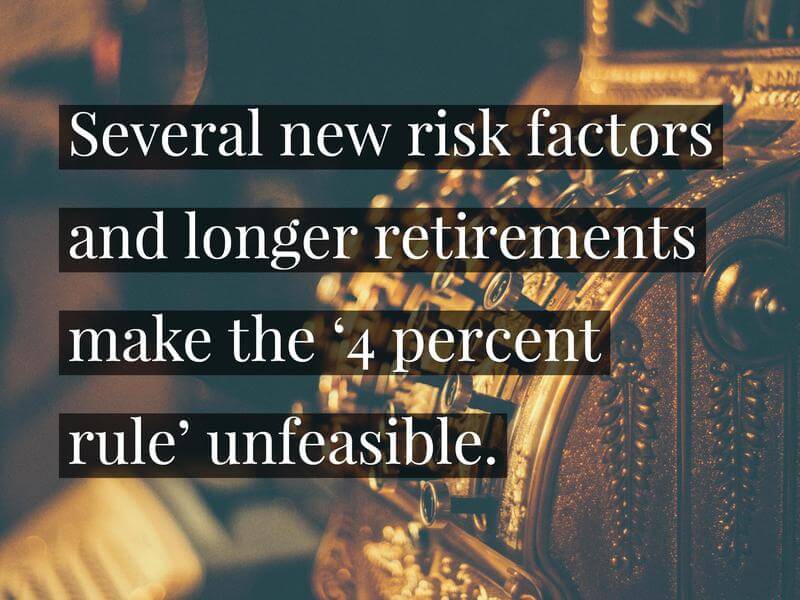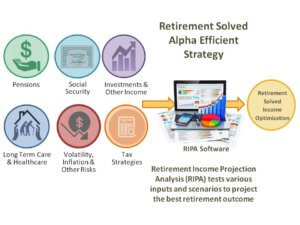Brian Saranovitz Featured in Work + Money Article: “The 4% Retirement Rule is Broken”
Recently, Your Retirement Advisor co-founder Brian Saranovitz was featured in a piece by Dave Copeland for the website Work + Money titled “The The 4 Percent Retirement Rule Is Broken”.
Unfamiliar with the “Four Percent Rule”? In 1994, financial advisor William Bengen found that he was skeptical of the traditional consensus that 5% was generally considered a safe amount for retirees to withdraw from a retirement account each year in their retirement. Using historical data on stock and bond returns over a 50-year period between 1926 and 1976 with an emphasis on severe market downturns in the 30s and early 70s, Bengen concluded that no historical case existed in which a 4% annual withdrawal exhausted a retirement portfolio in less than 33 years.
Considering that the investment landscape since 1994 has changed dramatically, the publication Work + Money sought out financial advisors to get their take on whether or not this rule of thumb should still be considered the “safe withdrawal” rule, including YRA’s very own, Brian Saranovitz.
Brian concludes that the 4 percent rule may not work in today’s markets if people follow the traditional recommendation of a portfolio made up of 60% stocks and 40% bonds. He explains that because bond yields are at a historic low, 4 percent will end up burning through the portfolio too quickly. For safety, he recommends an annual draw of 2-3 percent. Retirees looking to withdraw 4 percent each year may want to consider a combination of stocks and fixed indexed annuities, Brian advises. “Here at YRA, we have developed such a plan, which we call a ‘Multi-Discipline Retirement Strategy,’ which includes a portfolio of globally-diversified stocks and annuities. It’s a combination critical as one approaches retirement,” Brian states in the article. “It should also be coupled with a [systematic withdrawal income plan] and a buffer strategy in times of severe stock market losses.”
Risk Factors That Impact Portfolios and Make The 4 Percent Rule Unfeasible
Retirement Risk Factor # 1: Living Too Long. Longer-than-expected retirements are becoming the norm as longevity rates increase. As Brian explains specifically the problem with living too long is inflation. In other words in the present, a person is saving money for a future in which the prices of goods and services will have risen and the purchasing power of the consumer will have declined. To combat this problem, Brian advises that retirees need to reconsider portfolios that shortchange stocks for the supposedly safer world of bonds in their retirement portfolios. Due to the fact that historically, stocks have been the only investment that has outpaced inflation, YRA urges investors to consider a diversified portfolio to offset the volatility that is inherent to stocks.
Retirement Risk Factor #2: Volatility. To minimize the second retirement risk factor listed, volatility, Brian recommends utilizing standard deviation to observe the deviation of a portfolio from the average rate of return from year to year. The higher the standard deviation, the higher the volatility and the higher the volatility, the greater the risk of portfolio failure in retirement.
Retirement Risk Factor #3: Sequence of Return. While we cannot completely control sequence of return, the third risk factor featured, Brian expresses that investors can protect themselves from this type of risk by establishing a “safe bucket” of funds to withdraw from in the event of market downturn. In addition to keeping their principal stocks while waiting out the market correction, there is also research that proves this action has psychological benefits which can prevent panic and the sale of stocks when the market dips. “A proper buffer can consist of life insurance cash values, a reverse mortgage reserve account, cash or CDs, a guaranteed annuity, or any other account that will have a limited effect when there is a stock market downturn,” Brian adds in conclusion.
Retirement Risk Factor #4: Interest Rates. Bonds have an inverse relationship with interest rates: when interest rates are high, bond returns are low. And given that interest rates are at historic lows, bonds may be ready to fall from their highs. “Investors expecting bond funds to perform as well in the next ten years as they have in the last ten will be disappointed,” Saranvoitz said, noting there may even be a risk for negative returns. Bonds still have a place in a retirement portfolio, but probably not the half they occupied when the 4 percent rule was in fashion.
Read the full “The The 4 Percent Retirement Rule Is Broken” article here
If you’d like to chat with Brian about your portfolio and your withdrawal strategy, he offers a complimentary consultation.


